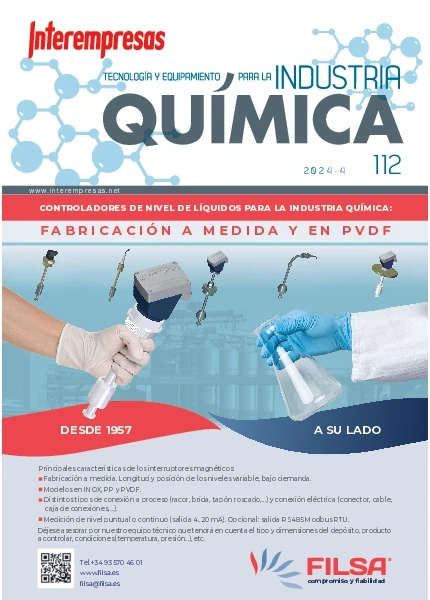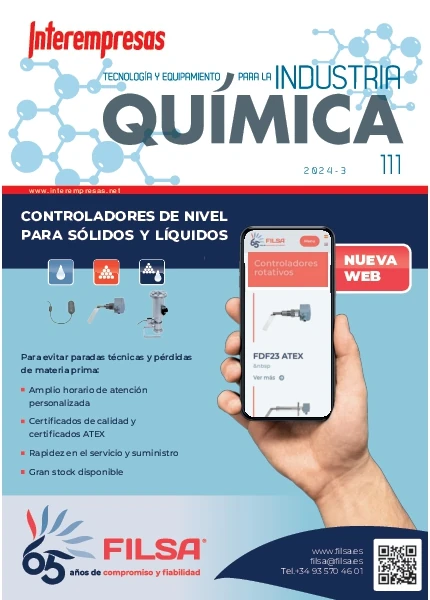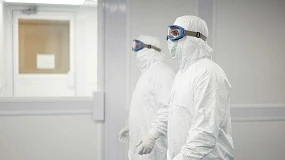The problem of the elbow: the «sacred module»
I. on the old metric

The Renaissance believed that God had created the universe According to the harmony and its metrical result: modulation. The same arms used by Vitruvius and the architects of the Classical Rome. In addition, at that time was measured in elbows, feet, and palmos, anthropometric measures consistent with the idea that "man is the" measure of all things. But there was a serious problem: each country (even) (every ancient civilization) had a subtly different measures. Not measured the same Spanish foot than one aragonés, Roman, Greek and Babylonian. AND the measures of the Bible were given in Babylonian elbows, that it was the measured prevailing in the area and the taken by Jews after his exile, as explained the prophet Ezekiel.
And however, one thing we can be sure: the elbow still It was a measure in common use in the Spain of the 16th century (it would be up) (middle of the 19th). When someone said that a room had five elbows of height, no one was doing conversions. All were made to the idea of a room just over 2½ metres. The only difference between feet and elbows was in what was measured. The floor of a room would measure in feet because more instrument to own toes of one would not be required poniendólos one below the other's runs as the same. For the measure of the height of the walls, should turn to a rod or measuring with elbows. So it is not strange that in Don Quixote (1605) Cervantes wrote: "[Golías] had seven elbows" "and a half in height, which is a desmensurada greatness".
We do not know too much about medieval metric on Spain, but the Professor Merino described as an amalgam of measures of origin Roman, Visigothic, and Arabic, to add the used by the Romanesque and Gothic builders, and usually adapted to the needs and circumstances of the place. In 1567, and after the failure the Montalvo system, initiated by the Catholic Monarchs in 1484, Philip II promulgated the code known as "New collection of the laws" «for Spain», which tries to put an end to legislative chaos existing, that the King already probably detect before the regionalisation of different gangs operating in the work of his monastery. Within This code, compiled the laws of the Royal jurisdiction, the 18 laws of Toro, the Order of Alcántara and Montalvo, by the Cortes of Valladolid and Madrid from 1523, is part of the pragmatic dictated by their own monarch from El Escorial 24 June 1568 that establishes that '(...) the Castilian rod that has to be used in all these reynos, is that there is, and «you have, the city of Burgos [...]». It is obvious that this attempt of metric unification did not produce the desired results, because, when in 1852 dictates the Royal order establishing the Decimal metric system in Spain, up to twenty different measurement systems are accounted for. Within these systems we have values ranging from 0'768 m of the rod of Teruel until the 0'912 m of Alicante, in addition to the different reeds used in Catalonia, about 155 centimeters, or destre Majorca with its 4'214 m. The most widespread measure in their use was the rod of Burgos and Castile, with a stand of 27'86 cm, spread by twenty-five provinces, but giving singularities as the Madrid with its foot of 28'10 cm.
As for the unit of measure used in El Escorial, not no doubt: was used the third part of the Castilian rod, i.e. the English foot, equivalent to twelve inches or sixteen digits. The Sigüenza father (Description, II.)(I) explains the «pitipié» of Herrera in the engravings of Perret: "the foot is a set of goldenrod" Castellana, which has four toes, four Palm OS, and every inch and every finger, "four grains of barley ladilla". In the first book (Foundation), (I.III) explained what is meant by span, which is different from 'palma', that is the distance from the end of the little finger to thumb: "[the]" [feet], which have 16 fingers, games in four Palm OS (span is called,) speaking strictly, the four fingers of the hand by conjectures more (high); "is this foot which responds to a set of the Castilian vara".
We also know other partitions, such as the half (1½) rod (foot), the ochava (eighth part of the rod), the average ochava (i.e. 4/3 of) (foot), inch (twelfth part of the foot), the sesma or half foot, step (5) (sesmas, 5/2 foot = 69'62 cm), etc. With this variety of multiples and submultiples, one foot could be divided into 12 or 16 Parties, as appropriate take fractions Basic 3 or 4. The stakeout could also agree on rods or steps.
-Merino J.M. of Caceres, «Cathedral of Segovia», p. 6.
-F. Chueca, Cathedral of Valladolid, p. 73.
II. on the type of biblical elbow
The first item to fix is of the type of used elbow in the Bible, historically very controversial. Nowadays it is usually accepted that the elbow used by Noah, Moses, Solomon, Ezekiel and San Juan It was the sacred side, distance from the elbow to the la palma extended middle finger, somewhat larger than the vulgar elbow, was taken to closed fist, which was the of more practical use to the convenience that was supposed to measure with a rope and roll later between the thumb and elbow. The number of laps multiplied by two would give us the number of measured vulgar elbows with the string. In this sense, Fernando Chueca pointed out: "Is" a proven fact that the ancient Egyptian, Chaldean villages Hebrew [...] they used two types of measures: some were sacred action units reserved for temples and palaces of the sacred dynasties, only known and managed by priests and initiates; the others were to the common people and were employed in profane works and useful [...] The Egyptian side, the pyramidal elbow, was known by the Hebrew people when It reached Egypt, which regarded it as a precious gift received by revelation "divine".
The Bible contains several ways to refer to the elbow, and here the Philology is a source that should be taken into account. The first time that is used in the sacred text the word elbow (' ammâh in the) original ( cubitus in the Vulgate) is to describe the iron bed of Og, King of Basan, whose actions were 9 x 4 elbows: "Novem cubes" habens longitudinis et latitudinis ad mensuram cubiti virilis manusquatuor "" (Deuteronomy 3: 11). The version of the B.A.C. translates this last expression by "elbows" regular", although the Bible of Ferrara, which was" translated by Sephardim Word by word in 1553, is more literal: "elbow" of varó"." The elbow must be the same used in the first book of Samuel, where the musician pastor David, before becoming King, faced with his honda to the champion of the Philistines, Gath Goliath, "whose stature" "era of six elbows and a span" (I) Sam 17: 4: "et egressus est vir castris Philisthinorum parrot" "nomine Geth Goliath altitudinis sex cubitorum et span" in the Vulgate; the Ferrara Bible translated literally: "And left man between the two: of Pelestim Goliath's real name" "of Gath: its height providing elbows and span". Because the elbow has six PalmOS, its height had to be 6 ' 1666 elbows (approx. 2'60 meters in height), not 6¼ as wrong some authors or 7½ as noted by Cervantes.
As for the elbow used by the prophet Ezekiel, this does not There should be any doubt. In the translation of the B.A.C, says: "3" a man looking like burnished bronze, had a rope in his hand flax and a cane to measure [calamus mensurae] [...] 5 de six elbows; an elbow and a span [sex cubitorum et span] "" (Ez 40: 3-5). Although later is much more explicit: "13" Here are the steps of the altar in exact elbows of elbow and hand [Ist-] "[autem mensura altaris in bouillon verissimo, qui palmum et cubitum habebat]" (Ez 43: 13).
-
Latin: as we see, St. Jerome used in the Vulgate Latin case different to the extent of the cane of Ezekiel ("sex") "cubitorum et span": Ez 40: 5, "six elbows with" ("span") at the height of Goliath ("sex") (""cubitorum et palmi": 6 elbows and a span"). In other words, We must understand that Ezekiel uses real big elbows ' ammâh 6 + 1 palmos, while Samuel uses vulgar 6 palmos elbows, more small, which adds a final inch. The Ablative of palmus-palmi It must be translated literally as circumstantial complement: "a" "Reed of six elbows and with span", something like «six» «bottle with Cap», which involves six blocked shots, and in our case elbows of seven palmos, rather than six. According to Dr. filologa Valentina's Antonio, to whom this translation, much of the Latinists I they would consider this shift as a lack of syntax, but the biblical reference It is beyond question. Can compare the two buildings used by Ezekiel in the Vulgate: "sex cubitorum et" "span" (literally, "six of the elbows, and with the") ("span") with "verissimo, qui habebat cube" "palmum et cubitum" ("real elbow, which was the") ("elbow and the hand").
-
Hebrew: consulted the Hebrew original version EZ 40: 5, we saw that, indeed the word elbow appears in two sometimes. We will give the literal translation, despite the differences of syntax, it is sufficiently intelligible, and are paid better sense of the exhibition: "ubiad hais" "Keno hamidah ses ammoth be-ammah vatophah" ("in hand") "man as cane's six elbows in the elbow and hand"; I have this difficult translation of a Hebrew original text from the 6th century to the responsible for the Institute of Philology Hebrew Arias Montano (C.S.I.C.), don Prophecy M. Hassan and Israeli scholar Samuel Salónico). The Hebrew commentators then consulted with me would be that impossible to provide the references less adequate, were of agreement with this translation and the differentiation of the two types of elbow, and even the translation of the prefix "in", which was in Hebrew a consonant with two brands in front of the second declension of "elbow".
-
Greek: Greek version of the 1970s I had a similar translation: Κάι Τo τήχειρί έv' αvδρός Κάλαμoς τό Μέτρov ξ vπήχει πηχώv Κάι παλαισής ("and in the hand of the man a rod for measuring") "of six elbows, elbow, and a span".
-
Old English: the version of the Duke Alba, 15th century, means it: "e" hand of the varon was vna cane measure in providing cobdos in a fist qual "avia", and a little later, in 1553, the Bible of Ferrara He recovered the duplication of the word "elbow", fundamental to understand the elbow used Ezekiel: "and" "hand of the varó the measure providing cane elbows có elbow and fist". In general the first translations of the Latin Lambert this verse, or should perhaps consider this last shift as a lack of syntax, by ignorance of the two types of elbows.
-
English: the English translation of the Bible Collins is even more explicit: "the" length of the measuring rod in the man's hand was six long cubits, each of "which was a cubit and a handbreadth". The same translation apply later: "... in cubits long," "that being a cubit and a handbreadth cubit" (Ez 40: 5). Also the commentator G a. Cooke (A critical and exegetical commentary on the) Book of Ezekiel, p. 378. (T. Clark, have, 1936) translated "a" "measuring rod of six cubits by the cubit and a handbreadth", and He added "this expression is obscure", although he accepted that is He is a large elbow ("long") of seven palmos.
III. on the relationship between the foot and elbow
(a) the antiquity and the middle ages
Herodotus of Halicarnassus (484-426 BC): is likely that the appointment of the oldest on the extent of the elbow is the of the Nine books of history of Herodotus. This is in addition to the elbow as the translation of a foreign measure, not as a relationship anthropometric within the same national measurement system. Although the text "the real elbow three long fingers to" "ordinary" can be interpreted as it speaks of an elbow sacred three fingers rather than the vulgar (24 + 3 = 27), we are interested in the interpretation of the father Prado, who plays as a Babylonian cubit of 28 + 3 = 31 modern fingers, as it coincides with our hypothesis to El Escorial. Herodotus wrote history of Persia in nine books, and as the real founder of the history Western knowledge of ancient Babylon they must be especially valued.
-
Vitruvio: of course is very important the Third book of architecture, unique Roman Baroque that has reached us. Noting that the measures have been always based on the human figure, gives the relationship between the foot, Palma, finger and elbow: "the foot is the sixth part" off the top of the body. "The cobdo is the fourth part". Of this so the Roman elbow to fist (6 x 4 = 24 fingers) be worth 29'577 x 1'5 = 44'365 cm.
-
Pliny the elder (23-79 AD) also cites in its xxvii libri historiarum naturae. In addition to be a perfect example of Roman classicism, the Latin polygraph Pliny is nearly contemporary with Herod and Jesus Christ, data to take into account. His books we came through his nephew, Pliny the younger (62-114 ad), which inspired the village with its beautiful Epistles Madama to Raphael, an example of such literary reconstruction to the that I propose to El Escorial. His Natural History was the only medical authority up to the s. XVI. He had numerous commentators in Spain between century XVI and XVII. We know that Herrera had the Natural History in his library, and that he was among the 41 books that Philip acquired of the estate of the late architect for the library of El Escorial. The partner of del Prado father, Villalpando also quoted the Roman nothing less than 48 times only in in his second volume, making it one of the higher authorities that supported the Jesuit. The text "each" "foot of his three fingers higher than ours" makes us propose the following mathematical interpretation in modern fingers:
- 1 foot bab. = 16 fingers bab. = 19 digits rom.
- 1 sacred elbow = 28 fingers bab. = 28 x 19/16 = 33¼ fingers rom. = 61,465 cm
On the knowledge of Pliny at that time, it may be significant a dispute between the doctor and the help of Charles House in Yuste: "And acaecióles once, above some" authority of Pliny, having each one dellos apparently opposite, stating one one thing and another one on understanding della. To which sent His Majesty called to father John rule and that way trujese a Pliny, "to declare who had more true opinion" (cfr.) Vicente de Cárdenas y Vicent: Charles of Habsburg in Yuste, p. 64, n. 3, (Chivalry, Madrid, 1990).This problem seemed to not be raised in scientific way before the fashion of the biblical reconstructions, already in full Renaissance. Origins (quoted by Kircher, Ark) Noah, I.II.(VIII); (p 39), one of the fathers of the Church, the they set impossibly - making use of a strong symbolism-6 feet (1'80 m, approx.), measure also collected by St. Augustine (in) Civitate Dei, XV.27, p. 359a): "and if we wanted" think what origins, not without wit, said: that Moses, man of God and, as the Scripture says 'versed in all the Sciences of the Egyptians', that they were fans and given to the study of geometry, could mean geometric elbows, one of which is equivalent to six of the "our". "Gnostic atheist" still they took an elbow than 9 feet (2'70 m). Frontinus, as Appian, Exiquio, Souda and Pollux, continued to Vitruvius, equating elbow and sesquipie (Kircher, ibidem, pp. 42s).
(b) the revival (s. 16th)
-



(Bookdei misteri.) Progetto di plianificazione planning, architettonica e figurative dil Sacro Monte di Varallo in Valsesia, ed. facs. A. Forni, Milan, 1974.) -
Jerónimo del Prado, S.I. (1593): the Jerome Jaén Jerónimo del Prado, which is partnering with Villalpando to rebuild the temple, before prepared separately a manuscript Treaty which he gave to King Philip II. In it one of the issues important was, of course the establishment of the length of the elbow. After a long correspondence between the various ancient authors, concludes a cubit of 44 Castilian fingers (= 2'75 feet = 76'615 cm):
1 elbow heb. = 2 10/17 Roman feet = 2 3/4 Hispanic feet =
= 11 Hispanic palmos = 44 Hispanic fingersThe text reads: "Herodotus as" lived in the time of the Persians, compares the Assyrian or Babylonian, that elbow called Regio (at the time), and dize that you excedia in three fingers and foot to foot in two, but this excedio Pliny on a finger because in chapter 26 of the book. 6, dize exceeds the foot of the Assyrians in his three-toed foot. And the Greek foot [...] excedia the Roman in media ounce qu is 24. part of the Roman, and this Roman exceeds ours in a "finger". The funny thing is that the Prado father passes above its own erudition to justify its large elbow (44 fingers against the 31) (from Herodotus), one of the disproportionate found, with one brazen interpretation of Jerome: "What" It is proving that moving S. Hieronimo a place of chapter 35 of the numbers instead of two thousand elbows puts in the Vulgate two thousand passos Judging that it was each of the elbows of Moissen time equal to one "of their passos of two feet and a half".
-
Fray José de Sigüenza, O.S.H. (1600): the known text of the Sigüenza father does no more than a vitruviana reference to the subject (Description, II.)(XXII, p. 607) to prove that Solomon's temple was a small building, of the size of the Escorial sacristy: "because" elbows to the Temple of Solomon [...] is measured have no more foot and a half of our Castilian varas, within a six palmos, and every inch of a four fingers [...] that otherwise would remain "infinitely many disadvantages and mostruosidades in the Santa story." In the original manuscript (p. 133) which is preserved in the library of the Monastery, this paragraph has a different writing that is crossed and replaced by the short, perhaps by his unpleasant syntax and the reference to Hebrew: "Rasonando to the cobdos" are not more than foot and a half of Rod castella six palmos and the pamo Quatro fingers by the average corners and these years of regular It is the very same throughout all the land. As the first measure or where is taken the largest of all these measures hardened dizen called sigur in Hebrew "or what is the same as bullion, number or quenta".
-
Juan Bautista Villalpando, S.I. (1605): the also Jerome Villalpando at the end of Book III, table VII, compares the Hebrew, Greek, Roman and Spanish steps, and equals a Hebrew 'bucket' to 45'5 fingers (= 2'84375 feet = 79'227 cm):
1 elbow heb. = 2 322/625 Greek feet = 2 388/625 old Roman feet =
= 3 3431/6250 Roman feet = 2 524/625 Hispanic feetThe justification for this measure is to calculate the weight of water contained in the «bronze sea» the Temple of Solomon witty and scholarly calculations, then modified based on correspondences between modern, ancient, Roman and Greek feet, (which also is based on Herodotus). This measure is very similar to the extent of the preliminary study of the Prado father. In any case, we have detected little coherence in some calculations of Villalpando, despite the appearance of accuracy that could be inferred from taken decimals.
-
Jacques capell (1607): the Protestant theologian James Capello (1570-1664) wrote a complete treatise on the measures of the ancient, distinguishing between the Roman foot (12 inches), Toledano (10), attic (Greek, 12½), Parisian (13½), Egyptian (14¼), Hebrew (15), Babylonian (16 2/3) and primary (antiquity) (veterotestamentaria, 25 inches). This relationship can be inferred that the Hebrew elbow had 24 Hebrew fingers or 24 x 15/12 = 30 Roman fingers, it is say 55'23 cm or 1'9824 Castilian feet, i.e. 31 3/4 fingers.
(Iacobo Capello: De mensuris, libri tres,) lib. (Iii), chap. VIII, p. 24, w. invasive, Francofurti, M.DC.(VII). -
Martín Esteban, S.I. (1615): echoes of Villalpando were kept in their followers. Another classic of the scholars of the temple, the Jesuit Martin Stephen, It devotes a whole chapter of his Compedio to discuss the Bible closely, quoting Villalpando as most inspired source. He previously had accepted the sesquipie vitruviano, although it finally takes the 45½ fingers of Villalpando. This author, in the same chapter, sets the interesting measure between heaven and Earth in no less than "117.051 miles, i.e. 39.017 leagues under the sea".
(c) of the Baroque period to the 19th (s. XVII-XIX)
Judá Leon (1665): is Jacob Judá León (1603-1675) is complicated by the fractions then round-up to two feet: "all elbow to three and a half" quarters. Or as to the size it would have two geometric feet, "each of them in an accurate measure contains 12 fingers". It seems clear that the Orthodox sources based on Vitruvius and the Vulgate they prefer a foot CUBiT and a half (about 41-44 cm according to whether Roman or) (Spanish), while the rabbinical sources, including the differentiation of the sacred side "of elbow and span" go by two feet (about 55 cm), although we have seen how Judá León quotes to Maimonides (Danish edition of the Talmud) than what exactly figure in 1'75 feet, but admitted his "geometric" rounding to 2 feet:
1 vulgar elbow = 3½/4 (7/8) sacred elbows
1 sacred elbow = 28 fingers = 28/16 feet = 7/4 feet = 1'75 feet = 2 feet geom.-
Atanasius Kircher, S.I (1673): Jesuit Kircher (1601-1680) devoted to the Spanish King Charles II his study on the Ark of Noah, where another full chapter devoted to setting the elbow that was It was built: "we we will not refer to the" Roman elbow, which is composed of foot and a half or three palmos, but taking in It has the tips of the fingers must be placed in a way "cross". As we see in this paragraph, Kircher already distinguishes between the Hebrew elbow to the fingertips and the Roman, six palmos or sesquipie: "the tips of the fingers must be enclosed by" "in a transversal manner".
-
Juan caramuel (1678): Madrid Caramuel It reproduces the same text - with some correction in Latin where- assuming the same elbow to the Sephardic: "Had" high [the Moria] this mount 300. ice cubes: and porq [EU] measures Geodeticas move with the time and place for hazer concept of what valia then a cube, will be well listen to Iohan Sauberto, than in the Glossas made with Iudas Leontius, part. 2 Ch. i. said assi [ID. text ant.] Had therefore mount MORIAH that is building the Temple, 600. feet high, if each bucket was two feet, as you want This author; and according to the statement common, which is the more true, and gives foot and means to each cube, comes to be quite large, since it would have 450. "feet"
("J. Caramuel: Arquitectvra line and obliqua",) PR.(IV).(I, p. 23).Isaac Newton (ca. 1695): the famous discoverer of the law of Universal gravitation Isaac Newton (1642-1725), also wrote a treatise on the temple. In addition, in its manuscript "A dissertation of cubits", translated from Latin to the English póstumante by John Greaves, reviews the various elbows Oriental, making use of archaeological data and the many existing treaties. According to their scholarly considerations, the Roman elbow would be better foot and a half, because took notice it of Vitruvius. As the foot Roman was equivalent to 967/1000 f, Roman elbow would be worth 1 4505/10000 f, is say 44'2112 cm. As for the elbow Egyptian, worth the face of the First Pyramid 693 f, is Newton that this measure should correspond to a round amount, as 400 elbows simple. In this way, and taking into account the measures of the sepulchral Chambers, it sets the elbow Memphis between 1'732, 1'719 and 1 '717 f, i.e. 52' 79, 52'39 and 52'33 cm and that of the grand Cairo, 1'824 f, i.e. 55'59 cm. With regard to the Persian elbow, set it in 1'67625, i.e. 51'09 cm, using the famous quotes from Herodotus we saw earlier, probably taken from Prado and Villalpando. It involves simple elbows of length 27/24, unlike in Prado, who considered them sacred length 31/28. Finally, after some consideration on the Arab side, discusses the measure that could use Josephus in Antiquities: three feet every two elbows, or more exactly, he adds, 30 feet each 22 elbows.
Bernard Lamy, C.O.P. (1696): the father Lamy in his Apparatus, written in 1696 and translated from the Latin in 1795 as a «Introduction to Sacred Scripture», was also widely the item. Includes a sheet with a reproduction of the "foot of" "Burgos": "comparison of the old measures of length between" "Yes, in that the elbow is worth 1 9/11 elbows ancient Roman", or "1" "feet, 11 inches, and four lines" of the modern measures. Lamy, for which the Hebrew "calamus" worth no doubt six elbows, believed that the Hebrew elbow should be assimilated to the Egyptian, since that would have been introduced by Moses, priest in that country prior to the flight of his people by the Red Sea: "Grevio English very insightful, and that" It made its observations on this matter in the Egypt, says that the elbow in this region called derah has thousand eight hundred twenty and four parts of the thousand that make up the foot of England. The foot of King It has thousand and sixty-eight parts of used in Castile [...] the elbow "Egyptian has 21-inch lines 10 2/5". In other words, that 1 elbow = 21/12 + 10/144 + 2 / 5 x 144 = 1'82222 feet, and taking 1 foot = 27'86 cm, 1 elbow = 50'767 cm. As regards the extent of John Greaves (Grevio, the) (translator of Newton), 1 elbow = 1,824 ft, taking 1 FT = 12 in = 30'48 cm, is 1 elbow = 55'595 cm.
Father Bernard Lamy (C.O.P. (1696), Introduction) the Holy Scripture or apparatus to understand more easily and clearly the Holy Bible in vulgar language. Translation of the work that wrote in Latin language the famous father Bernard Lamy, of the Congregation of the oratory [2 vols], pp. I-350s, pl. X, printing of (Cano benito, 1795)Richard simon (1717): follower of Villalpando, the Abbot Simon published a similar study in his "dictionary of" "the Bible" in which, with a great thoroughness, proposes that a Hebrew elbow 1 17/24 elbows Greek (27 1/3 fingers), Roman elbows 1 19/22 (29 9/11 fingers): "1 pied 8 pouces & 6 lignes", where 1 foot = 12-inch and 1 inch = 12 lines. Includes a plant of the temple and Jerusalem, from an earlier work: L'Histoire critique du Vieux Testament of 1693.
Le Grand Diccionnaire of the Bible (ou) Explication littérale et historique de tous les moys propres du Vieux et Nouveau Testament..., t. I, p. 56. Lyon, j. Vannes, 1717, 2 vols.)M. de Vogüe (1864): to end of the 19th century, the archeologist Vogüe Melchior took elbows of 52'50 cm, without greater justification, we assume, the archaeological.
(Le Temple of Jérusalem, Noblet) (&Amp; Baudry, Paris, 1864)
(d) the twentieth century
(e) about the possibility of an anthropometric elbow
We do not know whether Toledo would have more information about the different Egyptian elbows vulgar and sacred, or if he knew his difference with the used by Muslims in Cordoba and Granada, or if it would fonts Rabbinical. Some writers pointed out() see as certain monasteries and cathedrals repeated geometric and metric schemes changing only the real measure of the foot (Spanish, Carolingian, Capitoline, etc), but within limits. That is to say that one foot will always be in lathe to the 27-30 cm and an elbow to the 40-58 cm (admitting more margin for error, in this already) (that may be to fist or hand, sacred or vulgar). To be measured anthropometric, would not be acceptable use feet ten inches or elbows of one meter, while last it could be used in the middle ages by commentators with too much tendency to symbolism. It is essential to point out the advantages of the antropometrismo of ancient measures with a view to the easy layout or checking in work(). Specifying the fact that we are talking about, we believe It was foreseeable that these measurements of the terrestrial meridian were inaccurate, but it is surprising that the Pleiad of scientific involucarados in the formulation of the subway (Delambre, Borda, Lagrange, Laplace, Monge, Coulomb), (Lavoisier, etc.) end of setting up an absurd metro, a definition that it lacks rigorous scientific sense.
In any case, when it fails the archaeology and history, and When it is concluded that did not have the Egyptians over four millennia a elbow as accurate as our current metro(), is the time to use the proportions, arithmetic and geometry. We can think that East same problem had put is what the King and their architects, theologians and historians. Each one should raise his own elbow, than on the other hand no It had to be more reliable than the current, given its current state of knowledge in history. The interest shown by the King in the reconstruction of the Salomon Temple It is good proof of this, and the results obtained by Villalpando are, in all case, later. Surely body would take the Renaissance idea of "the" "step man of all things", and what is the best relationship between the elbow and? the foot to the anthropometric? I think is significant to note here that my itself in the foot measured 26 cm, and my elbow to Palm open 49 cm, which gives us 1'885 feet by elbow (52'516 m above the Spanish foot of 27'86 cm), relationship that does not depend on the race or the height (1'76 in my case), so this relationship not should have changed much since screened the monastery. Measures similar taken other people make it clear that both Vitruvius and the rabbis too simplified the problem. Let us remember that the Sigüenza father He admitted the possibility that the elbow, as well as the Vitruviano, could be Anthropometrical: "another side that is found is of each one man, and" This, as it is so variable, is not taking anything, but the same rule "man"().
By against Villalpando, proposed by an elbow from 79'23 cm, to justify the size of his elbow, criticized those who support the anthropometric elbow:
"Despite that no one think that the elbow that was" mentioned here is equal to the shoulder of our stature. Addition to such affirmation would be far from the truth, is in flagrant inconsistent with the context. It is that the height of the man is the same in? all ages? Perhaps the elbow is the same? Is it Ezekiel recalled prophetically? our height regardless of whether it was more or less than others moments of history or that of other peoples? [...] Who can believe that? those many chambers of five elbows in height, located in the very famous Temple of Solomon, should be inhabited or they should at least be "traveled by men of four elbows at least"().
Seems exaggerated the affirmation of the Jesuit, as accepted a cubit of seven spans of 27'86 / 4 x 7 = 48.76 cm, the height of ceilings It would be 2'44 m, in line with the modest proportions of the cells of the priests of the Temple of Solomon, whose height would be 4 elbows, i.e. 1'95 d. In fact typically accept older than 52'5 cm Egyptian elbows, so the height of the cells would be 2 ' 63 m; but it is doubtful that the average height of the priests, ignorant that should comply with the vitruvianas proportions, out of four of these same elbows, equal to 2'10 meters.
On the contrary, the Prado father Yes believed in Anthropometry the elbow, although applied to their own purposes: defend origins, following the guideline of Trent to use patrísticas and not Hebrew sources. "Bliss" differential nasce of all these measures of hand, foot and elbow are taken from the nature of a man, as they declare it their names, by the qual seems to [h] averse changed the statura of men walking always less [...] and with what was said is satisfaze to the difficulty of origins on the extent of the Ark, the "qual did invent a new elbow never seen or thought"().
Then, if some anthropometric hypothesis by? what might not be this side the King, or John the Baptist, or perhaps measured in the relics of a Saint, perhaps of the arm of the St. Lawrence himself? We know from the Sigüenza father that it was one of the first relics of the the King became collection before the monastery. He also sent Huesca "good part of the relics of the father and the mother of the martyr" "Spanish"(). However, Almela specifies only that is He kept "a whole thigh with his meat", "a large bone of the" "back and another big head", more "another bone from him in a" "small shrine"(). These are the pieces that today can seen, upon request, on the altar of St. Jerome, to the right of the main altar. We also know that of all the relics carefully listed by the Jerome, which included among other 6 of Christ, 3 of the Virgin, 6 whole bodies, 60 heads of Saints, 600 arms, 600 bones of the legs and 1200 minor relics, Sigüenza distinguishes the arms as "main canillas" or "notable relics"(). Conjectures that we can do at this point may be more or less logical or acceptable, but there is no doubt that the quotation of the Sigüenza father on the antroporfismo of the extent of the elbow should be very held into account, and that We should learn from our own definitions.
Nor can dismiss the archaeological source: it is possible the King possessed a genuine sacred measure, either Hebrew or Egyptian rod (from 28 fingers), Moorish (32 or 33 fingers) or even a conquered Muslim, by for example, in Granada (30 fingers), and that it was used directly, through his translation directly in the layout of the monastery, or measured in feet and fingers to move a project abstract to real measures. In any case, We believe that the results which must be confirmed this idea: we must find the Sancta sanctorum of 20 x 20 elbows and the sanctuary of 100 x 100 elbows.
(e2) our proposal: a cubit of 31 fingers
The Pantheon of the Kings, the authentic Sancta sanctorum of the monastery, measured according to Quevedo 36 feet in diameter by 38 high(). The measurement of the diameter at the time of Philip II would be of at least two feet more, as it was lined marble during the reign of his grandson, Philip IV [PL. 123b]. The Sancta sanctorum of Ezekiel, the most sacred place of the temple, since there was the Ark of the Covenant, was a square of twenty elbows: "He also measured the length, and were twenty elbows, and the width on the front of the Temple"elbows 20, and he told me this is the Sancta sanctorum"(Ez, 41: 4), i.e. 37'69 feet, taking the elbow more accepted 52 ' 5 cm (1 foot = 27'8635 m)." Although we will try to refine this result, the "general level" of this relationship is more correct. This "sacred module" revealed by God "the Supreme architect" would be the connection that the King sought between the vitruviana modulation and the revealed architecture.
Discarding by unpleasant and little rigorous discussion of the bronze sea, we can use sources from Prado father to use the elbow of Herodotus of 24 + 4 + 3 fingers:
"The Prophet Ezechiel hostile in Babylon compares the sacred and ancient elbow with the common of Babylon and dize which was a greater span() [...]" in chap. 26, of the book. 6, dize [Pliny] that the foot of the Assyrians in his foot in three fingersexceeds "."
If we take elbows of 31 digits, i.e. 1'9375 feet per side, a 'Hebrew' elbow 53'98 cm, could use a module of 20 elbows (i.e., 20 x31/16 = 38 3/4 feet or 10'79 m), the sacred module of the Blessed Sacrament or Sancta sanctorum. It was also the module of Solomon's temple (20 x 60 elbows, I Re 6: 16) and the Sancta (40 x 20 elbows), which coincided with that of Ezekiel (Ez 41: 3) and that of Herod(). We could use the «sacred» modulation and refer to the total measures of the sanctuary of Ezekiel and Herod, 100 x 100 elbows.
According to our proposed elbow, the Santuario-Templo of one hundred elbows would measure 193 3/4 feet, near, or at least on the scale, extent to which cites the Sigüenza father: "[the Temple] is a square Chapel, with very little difference of hundred and eighty feet"", not counting the alleyways and transits and chapels, in the bottom, nor to the thirty-foot high"(). If we add six or seven feet on each of the two walls, which Sigüenza never measured, since he always CITES internal measures, we are not far from our numbers. Sigüenza also attached the generating 'idea' of the temple square to the King: "thus speak now of it calling it a Basilica square, because this was the invention of its owner", which would indicate, if true, the clear will of Philip II of hierosolimitano 'square' scheme see reproduced in his eternal home. However, Paciotto is credited with having made square, although it may only be due to that it was he, and not Toledo, which was able to understand the real intentions(). However, they were the curved foundations to an apse, and his rectangularización after criticism from Paciotto did not occur until after 1564.We will also see more forward to General measures of «table» reproduced rather the steps of the temple he met Jesus Christ, which rebuilt the King Herod, and whose sources we saw that they were not biblical: the Misnah took notice of their measures 135 x 322While Josephus noted only 300. We advance that the monastery can register in a plot modular 19 x 15 squares of 20 elbows on the hand, 380 x 300 elbows, which would amount to duplication of the Temple of Herod leaving the sanctuary in the middle. Taking the 'sacred module' of 20 elbows (38 3/4 feet), the monastery would measure:
380 x31/16 x 300 x31/16 = 19x 383/4 x 15x 383/4 = 736¼ x 581¼ feet.
that it comes very close to 735 x 580 feet referred to by the Sigüenza father. Villalpando considered normal these rounding: "(...)" "use [Ezekiel] what is common norm among historians, which muted the parties decimals, expressing only the integers" (Explanationes, II.)(IV).(XXIV, p. S-230b). The height of the South façade of the monastery is on the other hand 76 feet, twice just 38 feet of height of the Pantheon, i.e. two modules of 20 elbows.
In any case we believe that it is not so important that elbow fit so well on measures of El Escorial, despite the difficulty of the translation - on the other hand, common at the time and in the majority of the scholars-, but it's a general scale problem. Thus, we believe that it is possible to conceive of the monastery as a reproduction of some of their history Bible, while the Sigüenza father believed that their measures "they are as different as heaven and Earth;" "and this comparison, is very small because they are as different as the body and spirit" ((description, II.))(XXII, p. 597). We believe, and do not understand as it has not seen it anyone before, that the parallels between the Escorial square Basilica and the shrine of Solomon, Ezekiel and Herod is more than obvious, especially if we relate the two unknowns that arise in this problem: know what side you could use and what points defining that square. Of course if we discover that the elbow has a few tenths more or less, it is a matter of measuring axes, or fascia, or cornices, or foundation if necessary, or simply think about layout errors. But this will not change anything the geometric fact true that the Escorial Temple is a square and that his "scale" is on the order of one hundred elbows on side. We believe that this proposal explains in passing the problem of the inclusion of a temple square in a Latin cross Basilica Church.










































